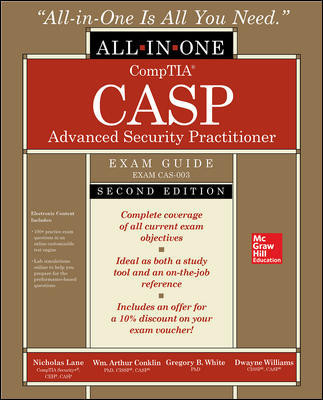Securing Supply Chains One Link at a Time

An Irish pharmaceutical company sees the need to protect its assets at its distribution center. Photo courtesy of Uniphar

Game theory and big data can better handle complex supply chain security issues. Chart courtesy of Armorway

Security video is at the heart of protection for an Ireland-based pharmaceutical company. Photo courtesy of Uniphar

At warehouses and distribution centers, new technology can provide non-intrusive screening of employees entering and exiting. Photo courtesy of ISCON

“Products in motion are most at risk,” says Bill Anderson, Ryder group director, international safety, health and security. Photo courtesy of Ryder





Speaking of a supply chain security challenge, one of United Iron and Metal’s warehouses is outdoors in a hard-scrabble urban neighborhood of Baltimore, and it sprawls over more than 20 acres with one boundary chockablock against railroad tracks. Unwanted visitors were a relentless headache... until John Creighton, the director of security at United Iron and Metal, did something about it.
Creighton’s security mission is specific, of course, to his type of business and location. But he shares an overall responsibility with distribution centers, warehouses and the myriad businesses along an always vulnerable supply chain.
In today’s world of expanding global trade and just-in-time sourcing, security of the supply chain involves diverse and ever-changing risks. Supply chains can now be measured in thousands of miles and in minutes. The Council of Supply Chain Management Professionals, with headquarters in Lombard, Illinois, makes the point: The supply chain is a complex and sometime fragile endeavor dependent on a network of independent, yet interconnected moving parts.
Supply chain security used to mostly mean protecting from pilferage. Now it is homeland security, tampering, corporate espionage, product diversion, workplace violence and more as security executives strive to maintain the integrity of product through its entire lifecycle.
Business Needs
“The two biggest supply chain threats are disruption and exploitation,” says Bill Anderson with logistics giant Ryder as group director for international safety, health and security. “If this system is disrupted by the closing of borders, ports or modes of transportation, the economic impact would be substantial.” Exploitation is more subtle but just as dangerous. “It’s using an existing supply chain for illegal uses. There’s product tampering, attacks against the brand, product counterfeiting. It is harder to detect.”
Anderson sees new tools when protecting the supply chain. “Expansion of data, the mobile telephone, more tracking along the chain,” he points out. “Products in motion are most at risk. Also consider the miniaturization of tracking devices. Something as small as a pack of cigarettes. Satellite tracking is also possible but expensive.”
Cybersecurity is right now in focus, according to Anderson. “It’s big data, and the same tools can analyze supply chain information. There is the possibility of an insider threat and employees leaking information.” He says that enterprises cannot afford to have that silo between IT and physical security.
While cybersecurity is less of a threat to John Creighton at United Iron and Metal, he and Clayton Dietz, the firm’s director of information systems, have assembled many security solutions together including fencing, card access control and traditional security video across recycling and transportation facilities in Maryland and Ohio at a business that’s been around for more than a century.
The rear of one facility is open to railroad tracks. “There were incidents of intrusion in a high crime area. We have a cash business with millions of dollars of assets and equipment. Our night maintenance crew was running into problems frequently,” says Creighton. He had officers patrolling but often, especially at night, it was cat-and-mouse with intruders. Dietz adds, “Security has multiple layers. Alarm panels, card access, cameras such as PTZs (pan-tilt-zoom cameras) that can swing around to look almost everywhere.”
Remote Monitoring
But the team brought in another unique solution more recently. “We now have cameras and remote monitoring for nights and weekends that not only alerts to intrusions but also acts as a prevention measure,” says Creighton. Technology from Eyewitness Surveillance of Hanover, Maryland, creates a virtual border around the facility. “It’s a first line and good line of defense. There is a live voice that acknowledges and reacts to intruders and provides specific information to track down the person more effectively.”
The technology has cut security costs at United Iron and Metal.
Thousands of miles away from Baltimore, Uniphar, a pharmaceutical firm, built a new distribution facility in Dublin’s Citywest Business campus and, working with integrator Pioneer Security, installed an IP-based video surveillance system from Tyco Security Products to assist in securing the facility.
Uniphar Group is focused on the healthcare and pharmacy sectors, distributing products to meet the needs of community pharmacies, hospital pharmacies and veterinary surgeries across Ireland. The company has a workforce of more than 500, and operates wholesale depots in Dublin, Cork, Limerick and Sligo, giving it the strongest wholesale depot structure in the Irish market.
Despite the presence of analog security cameras, Uniphar felt that a complete review of its security strategy and hardware was due.
To improve both internal controls and its overall security, the company wanted to install additional security measures at its 180,000 square foot warehouse in West Dublin. The warehousing and office facility was designed and constructed to meet the specific needs of the pharmaceutical industry. In addition to the facility’s office space, there is room for 10,000 pallets, 350 additional cold storage pallets and the country’s first automated storage and retrieval system handling over 120,000 storage crates. These fully alarmed cold rooms are the largest in the country.
Among the unique features of the new warehouse facility is an A-frame system for replenishing the fastest-moving stock by selecting it, dropping it onto a conveyor belt and quickly dispatching it to the appropriate transport unit. The warehouse also deploys “pick by light” technology that identifies items for stock pickers, who then can pick and drop those items into the correct shipper.
Logistics Details
With all of this new technology deployed, another concern was the ability to fully track the process through which orders are created, picked and packed to further refine the logistics systems and comply with the necessary regulations and certifications that are required within the pharmaceutical industry.
“Uniphar has made significant investments into state of the art distribution and logistics technology that would allow our operations the ultimate in quality and efficiency,” says Wayne McGarry, group operations manager Citywest. “We needed to ensure that we were getting those same qualities from our new IP security video system.”
With its new system from Tyco Security Products, designed and installed by Pioneer Security, Uniphar more than doubled the number of cameras throughout its facility. Selected for the site were upwards of 250 cameras, including domes, bullets and fisheye cameras.
Along with the cameras, Pioneer and Uniphar implemented a video management system (Victor from American Dynamics). The group operations and facilities managers at Uniphar are able to view, manage and control recorded video from VideoEdge NVRs and Video Edge Hybrid NVRs using Raid 5 for maximum hard drive reliability. The system was installed on a separate local area network so it doesn’t compete with bandwidth from other systems, nor is the information compromised.
Managers can now monitor the entire ordering process. The surveillance system records the complete process in the warehouse from the time an order is taken from the chemist and entered into the system, throughout the movement of the empty transport unit through automated or manual item picking, to the final invoicing of the completed order.
“The Uniphar team required a surveillance system that could provide a comprehensive picture of their operations and easily demonstrate the integrity of the order fulfillment process,” comments Eamon Reilly, integrated solutions manager at Pioneer Security. The system also provides forward compatibility, so it can accommodate further expansion whether through the addition of cameras, monitors or recorders.
Getting Down to Details
Supply chain security managers and their colleagues at warehouses and distribution centers also apply technology specific to their employee concerns.
For example, there are high-resolution, whole-body scanners that quickly identify concealed items without radiation or violating personal privacy. Such thermo-conductive technology combines infrared (IR) and heat transfer for high-resolution imaging without harmful ionizing radiation, according to Bill Gately, CEO at ISCON Imaging of Woburn, Massachusetts. The camera sees the thermal imprints of concealed objects against clothing providing high quality images for the operator.
Gately points out that his technology works well in many areas where distribution centers (DCs) are housed. “It’s a matter of culture. DCs are often in rural areas where there is an ethnic and religious mix.” A comfortable way to screen employees is a must.
Many supply chain security operations use walk through and hand helds. But there is the challenge of throughput and bottlenecks. Newer technology allows quicker straight through traffic with a green light pass-through and a red light to check out further. “One advantage is that no one knows how it all works so there is a self-policing aspect,” says Gately.
Game theory and big data also are playing a role in security the supply chain.
The U.S. Coast Guard, which protects busy ports, is one example. It uses software to intelligently plan randomized security patrols. The software also is aimed at airports, municipalities, border patrol and other applications, says Zaré Baghdasarian, CEO and co-founder of Armorway in Los Angeles, California. He observes that supply chain security executives “always have limited resources. They cannot predict all the things that can happen.” So modeling is a valuable tool to come up with procedures and a winning game plan.
Adds James Pita, chief software system architect and co-founder of Armorway: “For the Coast Guard, there are natural constraints on a patrol. All the data on risks that exist, historic past incidents, social media, everything is aggregated over time to determine interdiction measures and balance when and where they go out and how much time in an area.”
The company is using “game theory” technology, which calculates different offensive and defensive actions based on complex costs and benefits.
“Preventing crime is like a game of chess, and we use big data and game theory analytics to help our clients outsmart the bad guys,” says Baghdasarian. “We’ve created a mathematically augmented security program that generates unpredictable security plans using data from sources such as on-site cameras, historical crime records, social media, geolocation information, flight schedules, crowd movement patterns and real-time incident reporting. We’ve improved the effectiveness of patrols more than 60 percent in an ongoing trial with the U.S. Coast Guard.”
“Research and real-life data proves humans are not effective at randomizing patrols despite the best intentions,” Baghdasarian adds.
Looking for a reprint of this article?
From high-res PDFs to custom plaques, order your copy today!














